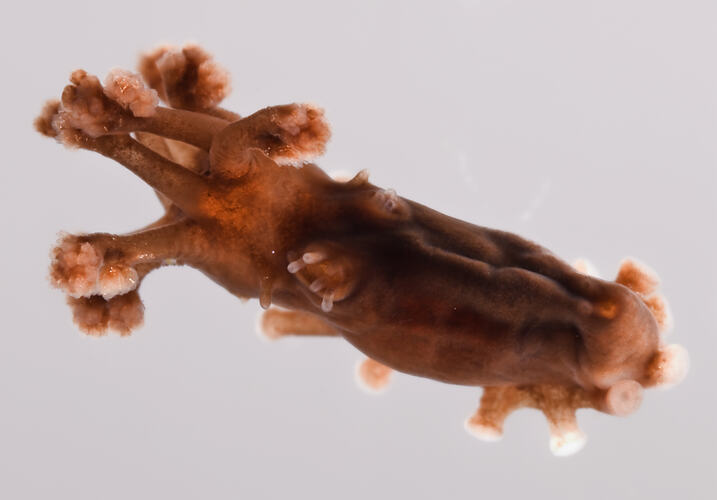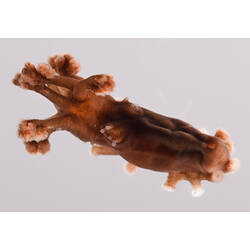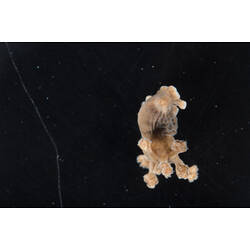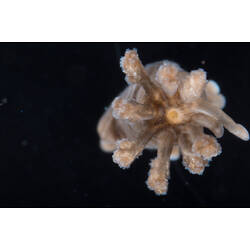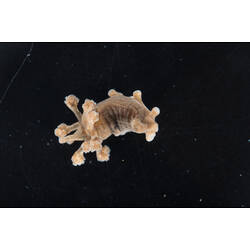General Description
Very small, roughly cylindrical to egg-shaped body; flat ventral sole; soft, thin to slightly leathery body wall; dark grey-brown; obvious tube feet ventral; two large anterior marsupia (brood pouches) with internal tube feet; 10 short dendritic tentacles, all anterior, ventral two smaller; ossicles absent or very rare branched/unbranched rods; up to 6 mm long, 3 mm high, 2.5 mm wide.
Biology
Incubocnus bimarsupiis, previously known as Neocnus bimarsupiis, is one of the smallest sea cucumbers in the world, with adults reaching a maximum size of 6 mm. It is dark and roughly egg-shaped with short bushy tentacles and relatively large ventral tube feet used to cling to its brown algal host. Sexes are not separate, and it is thought that this species is hermaphroditic or parthenogenetic. The anterior dorsal surface of adult Incubocnus bimarsupiis is dominated by a pair of marsupia (brood pouches) with minute internal tube feet. While exact methods are not known, it is thought that this species may use its two smaller ventral tentacles along with the internal tube feet to transfer eggs from the gonad to the brood pouch.
Distribution
South-eastern Australia from Robe, South Australia to Cape Paterson, Victoria and north-east coast of Tasmania.
Habitat
Reefs/Coastal shores. Attached to brown seaweed fronds (typically Zonaria angustata), rocky shallows, high wave energy parts of the south-eastern Australian coast, to depths of up to 6 m.
More Information
-
Animal Type
-
Animal SubType
-
Fast Fact
One of the world's smallest known sea cucumbers; named for its two dorsal pouches for brooding babies.
-
Brief Id
Very small, soft to slightly leathery body, dark grey-brown, ventral tube feet, 10 short bushy tentacles, two large anterior marsupia.
-
Maximum Size
6 mm
-
Habitats
-
Diet
Organic matter
-
Endemicity
-
Depths
Shore (0-1 m), Shallow (1-30 m)
-
Water Column Locations
On or near seafloor
-
Taxon Name
-
Scientific Author
(O'Loughlin & O'Hara, 1992)
-
Common Name
Sea Cucumber
-
Phylum
-
Class
-
Order
-
Family
-
Genus
-
Species Name
bimarsupiis
